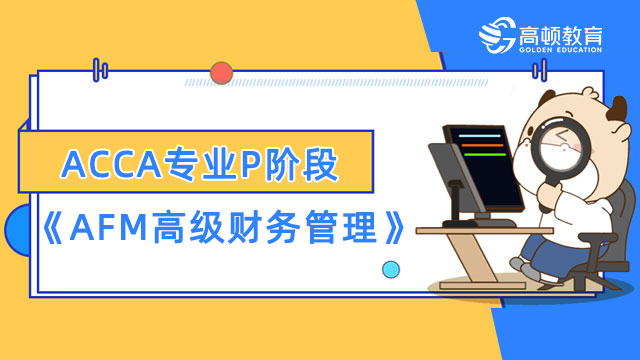ACCA考试《P5高级业绩管理》知识辅导5
来源:
高顿网校
2015-03-27
PERFORMANCE MEASURES TO SUPPORT COMPETITIVE ADVANTAGE
by Graham Morgan 01 Aug 2005
The emergence in the 1990s of low-cost airlines and the expansion of the European travel market has shown how competition can significantly affect the structure of an industry.
Ryanair and easyJet are now well-established and their on-going success will depend upon a continuing ability to attract customers and maintain operational efficiency. This must be done in the context of increased competition from schedule and charter airlines that now recognise the effectiveness of the business model adopted by the low-cost carriers. This article examines how the balanced scorecard might be used to maintain the low-cost carriers' competitive edge.
The business model adopted by low-cost carriers can be viewed as having three broad elements on which success is based:
· route network development
· brand development and marketing effectiveness
· low-cost operations.
These aspects can be seen to be structural as they reflect major decisions and developments which set the context for operational performance and day-to-day management.
The route network is the product dimension of first importance to customers. Before European air travel was deregulated in the mid-1990s, the market was neatly divided. Schedule carriers focused primarily on business travellers with 75% of the market, the other 25% being provided by charter airlines as part of the package holiday industry. Low-cost carriers use aircraft which for European routes are generally larger than those used by schedule airlines and routes the balanced scorecardmust be selected to provide high load factors, ie percentage of available seats sold.
Routes chosen should be new routes or those served by high-cost carriers, and have appeal to leisure and private travellers. This approach allows low-cost carriers to use secondary airports at major European cities or regional airports which provide overseas homeowners greater access to properties with minimum travel in the destination country. Another major aspect of the route network decision is the departure airport. Low-cost carriers' use of secondary airports in the UK provides convenience to travellers, and important cost savings for the company.
Another important factor in the development of the route network is to avoid direct competition from other low-cost carriers. In 2002, of 128 low-cost routes, only 17 involved the same departure and destination airports - and Ryanair and easyJet
adopted distinct positions in the market. While Ryanair has become the 'least-cost provider', easyJet has positioned itself to have a significant appeal to the business
traveller by flying three times a day to major cities such as Amsterdam, Madrid, Paris, and Zurich from London's Luton and Gatwick airports, which are generally viewed as
more accessible from London than Stansted (Ryanair's base airport)。 The success of the route network strategy is supported by the fact that easyJet carried 11 million passengers in 2004, operating 153 routes to 44 European airports.
Brand development and marketing effectiveness is essential for a product which has a high level of market acceptance which is evidently the case with the low-cost carriers' route network strategy outlined already.
There are two major factors which have allowed both Ryanair and easyJet to capitalise on product strengths to become leading UK brand names. First, the accepted practice in the industry of discounting prices just before departure dates was reversed so that fares are initially low and rise as departure dates approach. This practice, especially when supported by aggressive promotional campaigns such as '200,000 seats at 99p - must be booked before September 200X' promotes the company's central market message in an extremely effective manner. This strategy is particularly effective since the average price paid per seat is greatly in excess of the 'loss leader' promotional price and is comparable to that obtained by traditional charter airlines. Secondly, the brand is promoted by the adoption of direct selling to the customer either via the telephone or the Internet. The customer deals with Ryanair or easyJet and not the travel agent, with a consequent increase in brand identification. The removal of the latter from the purchase transaction also provides a significant cost saving since no commission is paid.
Low-cost operations are in part based on the cost advantages of operating from secondary airports, and the direct selling strategies outlined above. These cost advantages in relation to schedule airlines are enhanced by aircraft fleet utilisation decisions. Firstly, increased number of seats per aircraft provides a considerable reduction in passenger unit costs. Secondly, the daily flying time per aircraft is increased significantly. Thirdly, the elimination of free in-flight passenger services, particularly catering, removes a cost which is not necessarily value-adding to the customer and allows faster turnaround times between flights. The final factor providing significant cost savings are crew compensation and utilisation factors based on the higher usage time of aircraft. Lower costs and high load factors permit the low-cost carriers to offer fares 50 to 70% below those offered by schedule airlines. Binggeli and Pompeo1 have estimated that the cumulative cost savings for a lower cost carrier such as Ryanair are reflected in the cost per available seat kilometre (ASK) statistic. They estimate that in 2001, this cost to the top three major schedule airlines was 12 cents (US) compared with 4.5 cents (US) for Ryanair. On this basis, Ryanair's breakeven load factor is 55%.
The scorecard approach In maintaining the competitive position arising from the business model of the low-cost carriers, it is necessary for management to develop a set of performance measures which focus on key aspects of performance. The balanced scorecard provides a framework which can be utilised to develop a multi-dimensional set of performance measures for strategic control of the business. The Balanced Scorecard as shown in Figure 1 has been developed to reflect important aspects of the low-cost carrier's business model outlined above.
Figure 1: The balanced scorecard
The business process element of the scorecard is the logical starting point since it must reflect the 'do wells' of the business. In this context, no airline can be successful unless it has an excellent safety record and a reputation for punctuality of service. The high utilisation of aircraft of the low-cost carrier makes it vulnerable to delays, since there is inevitably a 'knock-on' effect within a flight timetable. The principal measure here, must therefore be 'adherence to schedule', which will depend on the effectiveness of managing three interconnected areas of activity.
Engineering management involves maintenance and safety work on aircraft between flights and the longer-term maintenance, requiring the aircraft to be withdrawn from service. Selection of an appropriate set of measures in this area must not lead to any compromise to safety standards or the inappropriate funding of short-term cost savings against long-term lifetime costs of operations.
Crew management, both of pilot and cabin staff, has to balance the need to have back-up staff to cover for unplanned absences and problems arising from flight delays. Again, this is a potential pressure point for the low-cost carrier, since staff utilisation is more intense than on schedule airlines. Ground and passenger handling activities, loading and unloading of passengers, luggage, fuel etc involves the co-ordination of different parties working to an agreed timetable. The lower level of passenger service and open seat (as opposed to allocated seat) policy of the low-cost carrier simplifies these relationships and as such work to their advantage.
The three above activities will in combination affect punctuality and the relationship with Air Traffic Control, whose goodwill can often be important in recovering 'lost' landing and take-off slots. The fundamental measure in this area must be percentage of flights on schedule with an analysis of delayed flights by reason - distinguishing
unavoidable and avoidable delays. The latter will indicate the areas where management action needs to be directed to improve performance.
Measures must also be developed for customer-company interaction with regard to both the booking and administrative aspects of travel, since the direct selling strategy is critical to on-going success. The enquiry-to-booking conversion rate would be the principal measure with an analysis of potential problem areas, again attempting to classify avoidable and unavoidable problems. Other conventional measures in an e-commerce world would need to be employed to assess the quality of customer service, eg response times to information requests via the Internet/telephone etc.
The innovation and growth elements must reflect the ability of the business to maintain competitive advantage. Two principal areas of innovation can be identified - route network development and the management of operational-based relationships. The first of these reflects the ongoing understanding of customer demand in terms of new route development. Two measures could be employed: timeperiod required to build traffic to breakeven load factor level number of routes withdrawn, eg within 18 months.
In evolving a new route structure, important relationships will have to be developed with handling agents, suppliers in destination airports, and time periods to establish effective relationships could be monitored against a standard time period. A major strategic development for low-cost carriers is their ability to establish 'hub-based' businesses abroad (eg in Germany) and to monitor this activity and assess similar initiatives. Other measures would focus on the development of individuals within the company, either by measures of expenditure on training or success in jobs as measured by internal promotion rates. These businesses require flexibility in the individuals they employ and this needs to be measured and managed.
The last two elements - customer and financial perspectives - are dependent on the performance achieved in the business processes, and innovation and growth elements should reflect achievements in the market and the effectiveness of management processes.
The customer perspective measures included customer satisfaction, rating of service/value-for-money, levels of customer complaints/compensation payments and measure of loyalty in terms of 'repeat business' and 'switching behaviour' between other low cost/schedule carriers. Other measures might assess the convenience of travel as measured by the average miles travelled to UK airport/from overseas airports to destination, a composite measure of total journey time, a key factor in customer satisfaction ratings.
The financial perspective will embrace the high-level performance measures such as return on capital employed (ROCE) and gearing which reflect the financial strength of the company - a key factor in entering long-term contracts for new aeroplanes and for evaluating the terms within leasing agreements. Key operational statistics influencing financial performance should be considered, such as load factors, route flying times,
and other revenue/cost measures analysed in terms of ASK statistics, eg cabin crew costs per ASK. Other measures might focus on specific initiatives which might have profit potential, eg the sale of targeted in-flight services beyond those conventionally provided such as catering and duty-free sales. Exceptional items such as fuel charge excesses might need to be monitored, given its potential impact on the profit outcome.
The above review of strategic developments within the European airline market and how the balanced scorecard might be used to monitor performance is essentially 'a rear-view mirror' approach and is limited in this respect. The key to success is future-oriented and while certain elements of the scorecard are fundamental to the industry, the key driver of success is the strategy adopted and the ability to keep ahead of competitors. On this basis, it might be argued that the innovation and growth element needs special thought and analysis since the modern world is characterised by persistent change, and successful business models have to be re-formulated in line with these changes. Nonetheless, the importance of performance measurement systems has long been recognised, since individuals know that 'what counts is counted'.
The performance measurement system adopted by an organisation is a very powerful means of not only evaluating an existing strategy, but is also useful for developing the mindsets within an organisation which will allow new strategies to be developed on the basis of a coherent analysis of the existing strategy and company performance.
Reference
1. Binggeli, U and Pompeo, L: Hyped Hopes for Europe's Low-Cost Airlines, The McKinsey Quarterly, 2002, number 4.
Graham J Morgan is a senior lecturer in strategy and management at The University of Central England
高顿网校温馨提醒
各位考生,2015年ACCA备考已经开始,为了方便各位学员能更加系统地掌握考试大纲的重点知识,帮助大家充分备考,体验实战,高顿网校开通了全免费的ACCA题库(包括精题真题和全真模考系统),题库里附有详细的答案解析,学员可以通过多种题型加强练习。欢迎各位考生扫描下方二维码下载,体验手机做题的超爽感受。
版权声明:本条内容自发布之日起,有效期为一个月。凡本网站注明“来源高顿教育”或“来源高顿网校”或“来源高顿”的所有作品,均为本网站合法拥有版权的作品,未经本网站授权,任何媒体、网站、个人不得转载、链接、转帖或以其他方式使用。
经本网站合法授权的,应在授权范围内使用,且使用时必须注明“来源高顿教育”或“来源高顿网校”或“来源高顿”,并不得对作品中出现的“高顿”字样进行删减、替换等。违反上述声明者,本网站将依法追究其法律责任。
本网站的部分资料转载自互联网,均尽力标明作者和出处。本网站转载的目的在于传递更多信息,并不意味着赞同其观点或证实其描述,本网站不对其真实性负责。
如您认为本网站刊载作品涉及版权等问题,请与本网站联系(邮箱fawu@gaodun.com,电话:021-31587497),本网站核实确认后会尽快予以处理。
点一下领资料
【整理版】ACCA各科目历年真题
真题高频考点,刷题全靠这份资料
下载合集
acca全科学习思维导图
梳理核心考点,一图看懂全部章节
下载合集
2023年acca考纲解析
覆盖科目重难点,备考按照计划走
下载合集
acca备考 热门问题解答
- acca考试怎么搭配科目?
-
建议优先选择相关联的科目进行搭配报考,这样可以提高备考效率,减轻备考压力,1、F1-F4:为随时机考科目,难度较低,这里可以自行随意选择考试顺序。2、F5-F9:如果你的工作的和财务会计或者审计有关、或者你比较擅长财务和审计的话,推荐先考F7和F8。你可以选择一起考ACCA考试科目F7和F8或者先考F7(8)再考F8(7),这就要取决你一次想考几门。3、P阶段:选修科目中,建议企业首选AFM!第二部分科目进行选择,如果AA和SBR掌握学生更好,可以通过选择AAA,如果SBL掌握的好,可以自己选择APM。
- acca一共几门几年考完?
-
acca一共有15门考试科目,其中有必修科目和选修科目,考生需要考完13门科目才能拿下证书。
- acca一年考几次?
-
acca一年有4次考试,分别是3月、6月、9月和12月,分季机考科目是采取的这类四个考季的模式,而随时机考则是没有这方面的时间规定限制,可以随报随考。
- acca的含金量如何?
-
ACCA证书的含金量是比较高的,从就业、能力提升、全球认可等角度来说,都是比较有优势的证书,其含金量主要表现在以下几个方面:1、国际化,认可度高;2、岗位多,就业前景好;3、缺口大,人才激励。
严选名师 全流程服务
其他人还搜了
热门推荐
-
acca专业阶段考试科目有哪些?究竟都考些什么? 2023-04-23
-
accaP阶段科目考完需要多久?速戳了解! 2023-03-28
-
ACCA高级课程是哪几门?和基础课程比难度怎么样? 2023-03-17
-
sbr和sbl哪个难?accaP阶段先考哪个? 2023-03-16
-
accaP阶段报名费是多少?一文介绍全了! 2023-03-14
-
accaP阶段有哪些科目?各科目详细介绍! 2023-03-14
-
accap阶段考试顺序是怎样的?选修科目怎么选? 2023-03-10
-
acca考试科目:《ATX高级税务》重点详解! 2023-03-06
-
acca考试科目:《APM高级业绩管理》重点详解! 2023-03-06
-
acca考试科目:《AFM高级财务管理》重点详解! 2023-03-06
-
accap阶段有效期是多久?需要几年内考完? 2023-03-01
-
accaP阶段选修选哪两门?各科难度对比来了! 2023-02-28
-
2023年acca的sbl怎么学?点击查收备考攻略! 2023-02-24
-
acca考试p阶段科目题型,附各科分值参考! 2023-02-23
-
accap阶段要考几门?重难点是什么? 2023-02-10
-
accap阶段要考几门?重难点是什么? 2023-02-10
-
accaP阶段科目怎么搭配?先考哪门? 2023-02-09
-
ACCA专业P阶段:《AFM高级财务管理》复习攻略 2023-01-30
-
accap阶段选哪两门?考试重难点介绍! 2023-01-17
-
acca考试科目:《AAA高级审计与鉴证》题型及重点! 2023-01-17
-
acca专业阶段考试难度分析,选修科目报考指南来了! 2023-01-12
-
accap阶段报考顺序推荐,先报哪个好? 2022-12-15
-
ACCAp阶段一次最多考几门?成绩有效期是多久? 2022-08-24
-
ACCA的p阶段需要备考多久才够?考试难度怎么样? 2022-08-18
-
ACCAp阶段考试需要考几门?考试时间是哪天? 2022-08-15
-
ACCA考试P阶段考几门?P阶段成绩有效期是多久? 2022-08-12
-
ACCAP阶段科目难度高吗?P阶段是机考吗? 2022-08-10
-
ACCA最后四门难考吗?通过率怎么样? 2022-07-19
-
ACCA英语不好怎么办?怎么提高英语? 2022-07-14
-
ACCA机考报名时间是什么时候?怎么报考? 2022-07-14
 更多服务
更多服务








































